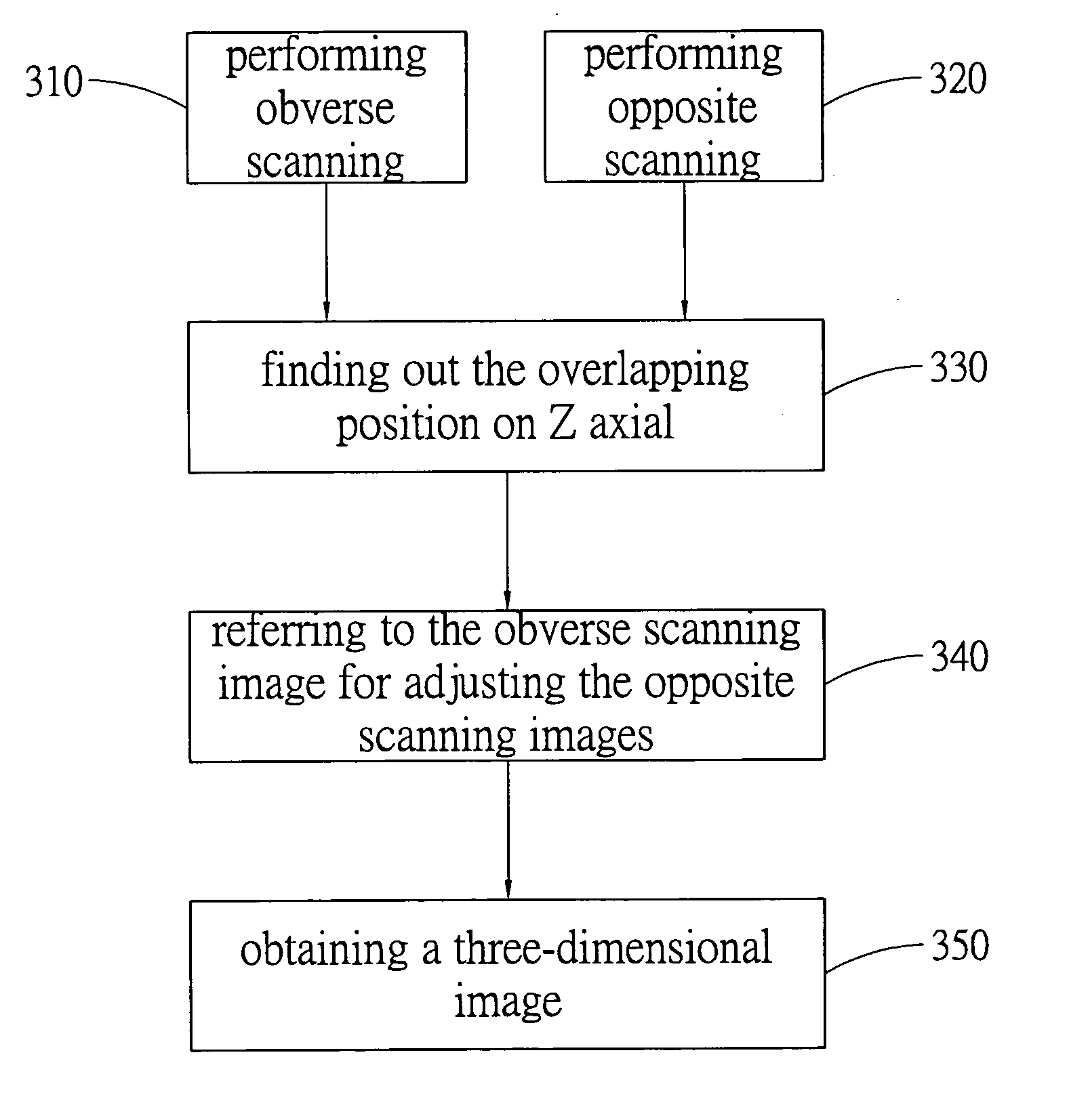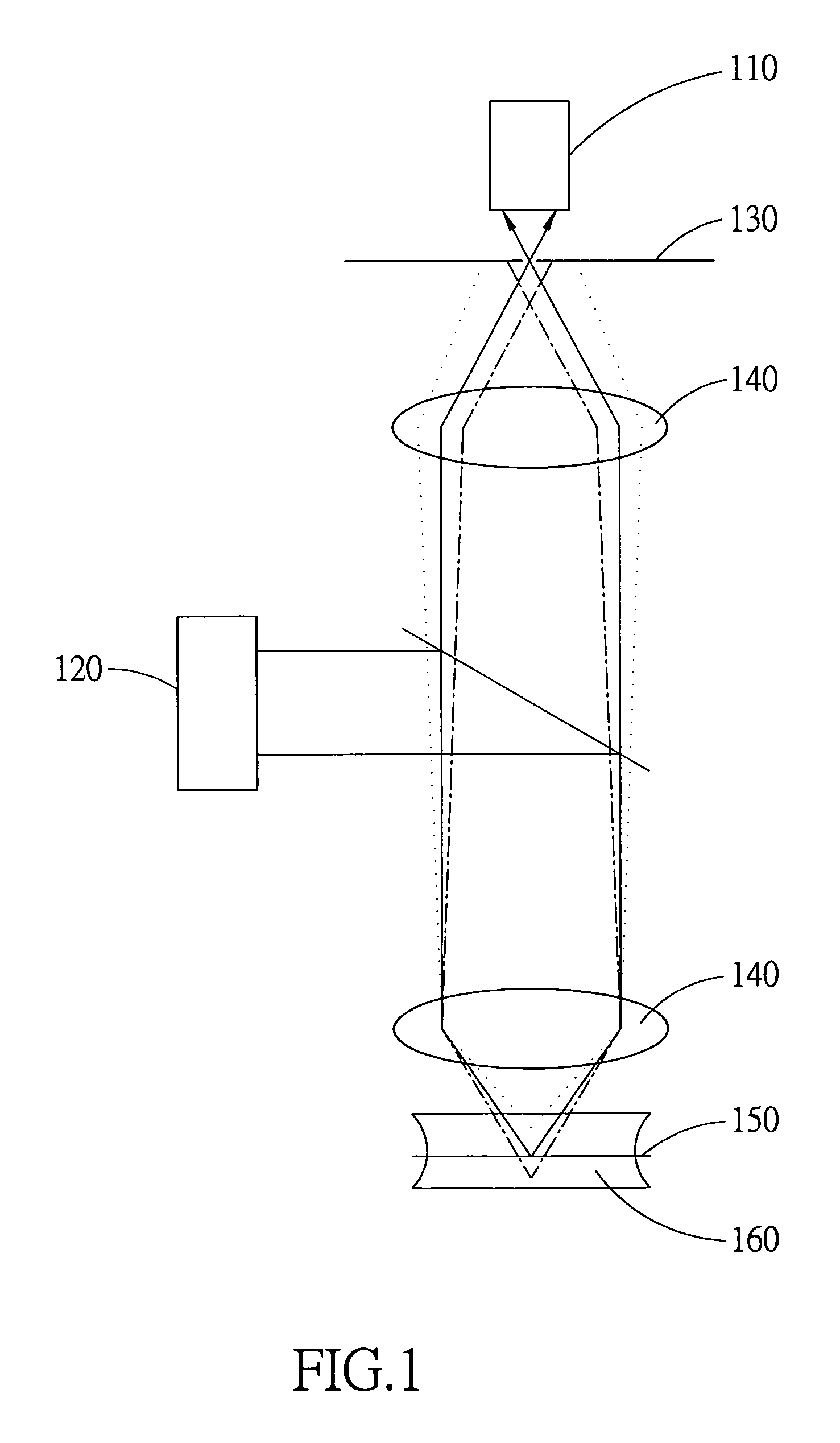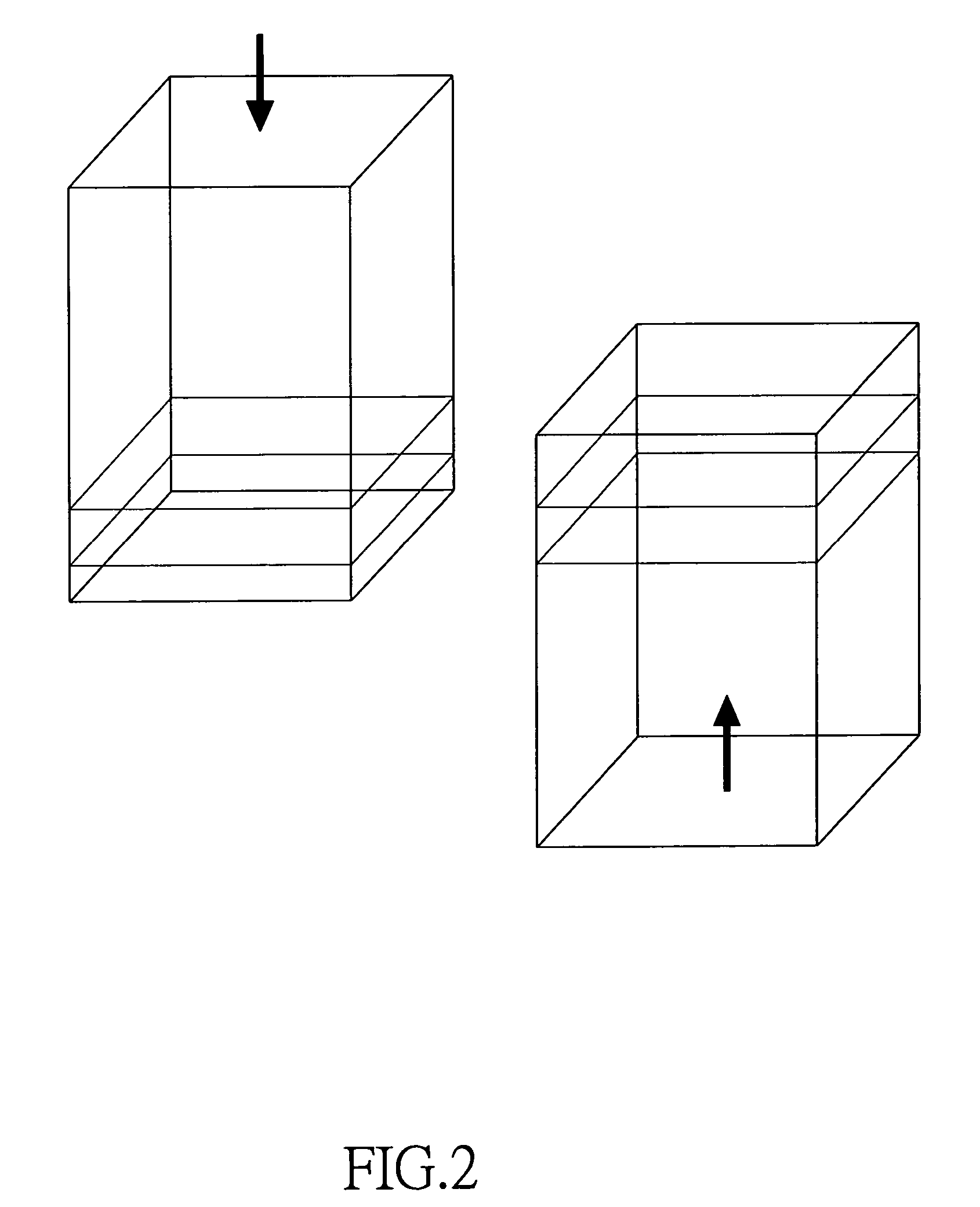Method for improving the depth of field and resolution of microscopy
- Summary
- Abstract
- Description
- Claims
- Application Information
AI Technical Summary
Benefits of technology
Problems solved by technology
Method used
Image
Examples
first embodiment
[0042]FIG. 9 shows the surface spectrums of the obverse and the opposite scanning images. Picking the lowest of the obverse scanning images and every of the opposite scanning images, the rough position of the lowest of the obverse scanning images relative to the opposite scanning images on Z axial can be determined by using fast Fourier Transferring to calculate the peaks during rotating the two images, as shown in FIG. 7. Then, by the mentioned Sobel edge checking concept, the portion with larger edge variation, such as the rectangle flame with bold lines in FIG. 5C, can be found out. Using the above-mentioned portion and the relative matching method, the image in the opposite scanning images most similar to the image A in the obverse scanning images can be found, and the overlapping position of the obverse and the opposite scanning images on Z axial can be determined. The flow chart for determining the overlapping position on Z axial is shown as FIG. 8. After determining the overl...
second embodiment
[0043] The thickness of the cerebrum of a fly is about 160 μm. After marking the cranial nerve cells with green fluorescence protein and activating with a 488 nm laser, the complete three-dimensional image of the cerebrum can be taken. However, it is found that when the depth of the sample is deeper, the taken image by the laser becomes more blurred. That is cause by the light-absorption of the organism sample. The energy of the activated light or the emitted light is absorbed by the sample, and thus the taken three-dimensional image becomes very blurred under some depth. When employing the method of this invention, in order to obtain a complete and clear three-dimensional cerebrum image, it is only required to scan to a little deeper than the depth of the cerebrum for the obverse and the opposite scanning, and to combine the obtained images.
third embodiment
[0044] Generally, in order to perform a confocal microscopic scanning, an organism tissue thin slice may be buried in glycerol for microscopic scanning and the following recording. By cooperating with the method of this invention, the thickness of the target organism tissue sample can be raised to about twice than the thickness of the organism tissue sample in the prior art. After embedding an organism tissue sample with sample embedding gel for fixing it in three-dimensional space, a complete and clear 3D organism image can be obtained by scanning the sample until the scanning depth a little deeper than the thickness of the sample for taking the obverse and the opposite scanning images and combining the above-mentioned scanning images. The thickness of the three-dimensional image obtained by the above-mentioned method is twice as thick as the thickness obtained by the sample buried in glycerol and scanned by the prior art method.
PUM
 Login to View More
Login to View More Abstract
Description
Claims
Application Information
 Login to View More
Login to View More - R&D
- Intellectual Property
- Life Sciences
- Materials
- Tech Scout
- Unparalleled Data Quality
- Higher Quality Content
- 60% Fewer Hallucinations
Browse by: Latest US Patents, China's latest patents, Technical Efficacy Thesaurus, Application Domain, Technology Topic, Popular Technical Reports.
© 2025 PatSnap. All rights reserved.Legal|Privacy policy|Modern Slavery Act Transparency Statement|Sitemap|About US| Contact US: help@patsnap.com



